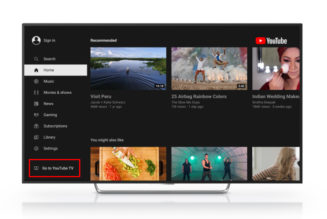The 2021 Lenovo Legion 5 Pro was my favorite gaming laptop of last year. I loved its keyboard, its 16-inch QHD 16:10 aspect ratio display, and, of course, its powerful RTX 3070 GPU. What I loved the most was that Lenovo achieved in a $1,599.99 machine what most competitors charge close to $2K or more for.
The 2022 version of the Legion 5 Pro brings more of the same but with an as-tested $1,999 price that costs $500 more than the AMD-based version that we tested last year. It still delivers one of the best typing experiences that I’ve experienced on a gaming laptop, and Lenovo improved on its display by adding variable refresh rate support to keep games looking smooth.
As for what’s new, it’s faster, with support for the latest 12th Gen Intel processors and AMD’s Ryzen 6000 H-series processors, along with new and more powerful GPUs. Also, last year’s edgier-looking top shell looks a little more toned down now.
Some downsides have carried over from the 2021 version, however, including the base model’s paltry 512GB of storage. It only takes a few games to all but use up such a small amount of space. And while I gave mild praise to its speakers last year, I’ve tested a few competing gaming laptops, like the Asus Strix Scar 17 and Razer’s latest Blade, that prove how much better they can sound if you’re willing to spend more. And some of Lenovo’s preinstalled apps and bloatware like McAfee anti-virus software regularly serve annoying pop-ups on the corner of the screen.
Then, there’s the matter of supply. The 2021 Legion 5 Pro was sold exclusively at Walmart, and it was sold out for most of the year, though it’s now more readily available for $1,399.99. I’m not sure if the pandemic’s effects on chip shortages are to blame, if Walmart dropped the ball, or if Lenovo misjudged how popular this model might be. Either way, it was disappointing to me that readers couldn’t find my favorite laptop in stock. As for this year’s model, we’ll have to wait and see if that situation improves.
At the time of publication, Lenovo had almost no details to provide about pricing for the other models in the Legion 5 Pro lineup, particularly the AMD-based models. It was even short on concrete details for the model that I’m testing for review, like an exact release date or a product page. It’s useful for the purposes of a review to have basic info for the sake of comparison, like prices for each configuration and when they’ll come out. We’ll update this review once Lenovo shares more info.
:no_upscale()/cdn.vox-cdn.com/uploads/chorus_asset/file/23432558/cfaulkner_141231_5182_0003.jpg)
:no_upscale()/cdn.vox-cdn.com/uploads/chorus_asset/file/23432559/cfaulkner_141231_5182_0004.jpg)
Lenovo is now one of many manufacturers that makes two versions of its gaming laptops, one with AMD processors and another with Intel processors (Intel is denoted with “i” in the name, like Legion 5i Pro). The model that it sent over for review is nearly the highest-end Intel model that it offers, equipped with the Core i7-12700H processor (there will also be a Core i9-12900H model) and with Nvidia’s RTX 3070 Ti that has an impressive 150W maximum graphics power. As with almost all high-end gaming laptops coming in 2022, this Legion 5 Pro has 16GB DDR5 RAM clocked at 4,800MHz and can go up to 32GB. For storage, the configuration I have has 512GB.
It’s cool to see Lenovo getting on board with the latest standards, but it’s still out of touch with how little storage it includes in the base model. A measly 512GB of storage just isn’t enough given how large game file sizes have become. I had to offload storage after I had installed Cyberpunk 2077, Red Dead Redemption 2, Shadow of the Tomb Raider, and a few other apps. It’s not a good look that I feel the need to urge any prospective buyers to open up the laptop and install M.2 SSDs. All Legion 5 Pro models feature two M.2 slots of different sizes (one M.2 2242 slot and one M.2 2280 slot), and pricier configurations include at least 1TB of storage.
In addition to the default storm grey colorway, Lenovo also makes the Legion 5 Pro in a glacier white. The company has also swapped the outdated Legion logo on top of the display’s lid for a newer one that just says “Legion.” That completes my tour of the new design features in this year’s Legion 5 Pro. It looks nearly identical in all other ways. It’s still kind of a slab of a laptop design-wise and far from an immediate head-turner like the Razer Blade 15 or the Asus Zephyrus G14. Though, that could easily be considered a perk by some, including myself.
:no_upscale()/cdn.vox-cdn.com/uploads/chorus_asset/file/23432556/cfaulkner_141231_5182_0001.jpg)
:no_upscale()/cdn.vox-cdn.com/uploads/chorus_asset/file/23432557/cfaulkner_141231_5182_0002.jpg)
Despite the limited design tweaks, some of the ports have been rearranged to make room for an extra USB-C port. On the left side, there’s one USB-C 3.2 Gen 2 port and a Thunderbolt 4 USB-C port. The headphone jack is now on the right side instead of the left, joining the switch that controls the electronic camera shutter and USB-A 3.2 Gen 1 port. The connectivity on the rear is mostly the same as that of last year’s model, consisting of a power jack, two USB-A 3.2 Gen 1 ports, an HDMI 2.1 port, a USB-C PD port, and an Ethernet port. Last year’s model had one extra USB-A port, but I’m not distraught over it getting left out.
As for how long this gaming laptop can last on a single charge, I got around five hours with a mix of using about a dozen tabs in Microsoft Edge, with Slack and Spotify running in the background. The screen’s brightness was set to around 40 percent, and I set the Legion 5 Pro’s cooling profile to its automatic settings. I also did a 30-minute Zoom meeting. So, the longevity here isn’t abnormally low, nor is it very good. But thankfully, Lenovo offers a couple of ways to charge the laptop, which is a move that several other manufacturers have also adopted.
Lenovo more than doubled the top charging speed of its rear USB-C port to 135W in this new model from 65W last year. Charging via USB-C sure beats carrying around its massive 300W power brick, though the laptop will drain faster than it can charge if you plan on doing some gaming while only using a USB-C charger. Conversely, one convincing reason to bring that hefty charger along is to use the Super Rapid Charge feature, which claims to recharge a large portion of the 80Wh battery in around 30 minutes. Using the feature requires you to opt in through the preinstalled Lenovo Vantage software. I’ve tried it, and it filled over half the battery’s capacity in that timeframe (though the wrist rest gets a little toasty during the process).
:no_upscale()/cdn.vox-cdn.com/uploads/chorus_asset/file/23432565/cfaulkner_141231_5182_0010.jpg)
The Legion 5 Pro continues to be an absolute dream to type on — and use, generally. Many manufacturers have delivered minor keyboard redesigns this year (including Dell, Alienware, and more), but Lenovo was right to keep this one exactly as it was. It’s jam-packed — there’s a full number pad, and its directional keys are nice and big. On some keyboard layouts, I’ll accidentally hit the power button or misfire by hitting the right Shift when I want to press the forward slash button — but I didn’t experience accidental presses here. Lenovo claims to have slightly increased the size of the trackpad in this year’s model, but the difference is negligible.
An area that Lenovo didn’t update (though I wish it had) is the Legion 5 Pro’s speakers. They’re no worse than the ones in last year’s laptop, but some manufacturers have made big improvements here in 2022. Bad speakers like the ones in the Legion 5 Pro are what inspired video creator Dave2D to do in-depth testing to get to the bottom of why Windows laptops generally have such terrible audio, especially when compared to recent MacBooks. I get that many gamers use gaming headsets and headphones, but these speakers could have used some love for 2022.
:no_upscale()/cdn.vox-cdn.com/uploads/chorus_asset/file/23432569/cfaulkner_141231_5182_0014.jpg)
:no_upscale()/cdn.vox-cdn.com/uploads/chorus_asset/file/23432566/cfaulkner_141231_5182_0011.jpg)
The 16-inch matte IPS display included with this Legion 5 Pro has received some upgrades, even if you might not immediately notice them. Like last year, it has a 165Hz QHD+ resolution panel. What’s new is that it supports variable refresh rate (VRR), which lets the display’s refresh rate flex in sync with the hardware, with the intent being that you’ll notice fewer stutters during intense gameplay.
Outside of screen specs, the display built into the Legion 5 Pro looks just as stunning as last year’s, with 100 percent coverage of the sRGB color gamut. Lenovo says that it can offer 500 nits at peak brightness. While I didn’t have the tools to measure the accuracy of that claim on-hand, the screen remained very bright and crisp while bathed in natural light. Lower-end versions of the Legion 5 Pro have a 1,920 x 1,200 resolution with 300 nits of peak brightness.
Shifting to gaming performance, I noticed a sizable year-over-year improvement in almost every game that I tested. For instance, Shadow of the Tomb Raider’s benchmark (with graphics settings and ray tracing set to ultra and Nvidia’s deep learning super sampling, or DLSS, set to balanced) ran at an average of 82 frames per second at native resolution — a 20-frame increase over the last-gen laptop. Without ray tracing (with DLSS still switched on), the performance shot up to 110 frames per second.
With its graphics settings on ultra and the full suite of ray tracing options set to max (with DLSS on), Control was almost always running over 55 frames per second at native resolution, with some environments hovering comfortably above 70 frames per second — another dramatic year-over-year improvement. The 2021 model topped out at around 45 frames per second regardless of the scene.
:no_upscale()/cdn.vox-cdn.com/uploads/chorus_asset/file/23432562/cfaulkner_141231_5182_0007.jpg)
:no_upscale()/cdn.vox-cdn.com/uploads/chorus_asset/file/23432560/cfaulkner_141231_5182_0005.jpg)
The only game that I tested that didn’t display a huge boost in performance was Red Dead Redemption 2, which ran at an average of 59 frames per second (the same result that last year’s model put up) with graphics settings set to ultra. DLSS wasn’t available in Red Dead Redemption 2 when I tested it last year, but that feature bumped the average up to 73 frames per second.
Like last year’s Legion 5 Pro, this model keeps relatively cool and quiet while running games. You can switch between performance profiles by holding the Function key and pressing the Q key. The power button’s LED changes colors to indicate the profile that has been set (blue is silent mode, white is auto mode, and red is performance mode). For transparency, the gaming results that I recorded came from the auto mode, but most games got a small frame rate boost once the performance mode was enabled. That mode works exclusively while it’s plugged into power, and it’ll automatically brighten the screen and prep the machine to use its full amount of power. With that setting on, the fans can run full tilt in games and in other demanding applications, but even then, it’s not the loudest gaming laptop I’ve ever used.
Running through a few more tests, the Legion 5 Pro delivered impressive results in our Adobe Premiere Pro export, which measures how quickly a machine can render a 4K file from our Verge video team. The five-minute, 33-second clip finished exporting in just two minutes, 34 seconds. Suffice to say, I’ve got no complaints about this performance — it’s fast. I also ran Puget’s Premiere Pro benchmark, and the Legion 5 Pro got an aggregate score of 835. You can check out its in-depth results here.
:no_upscale()/cdn.vox-cdn.com/uploads/chorus_asset/file/23432563/cfaulkner_141231_5182_0008.jpg)
I’m happy with the internal spec improvements that Lenovo made to this year’s Legion 5 Pro, and people who don’t want to spend a fortune on a gaming laptop should consider this model. It’s a fast laptop for more than just gaming, and I still adore the typing experience.
Lenovo’s lack of transparency around pricing notwithstanding, the best thing about this Intel-based version that I tested is its price. Considering its power, this $1,999 Legion is still fairly affordable as far as rigs loaded with Intel’s 12th Gen chips go. For example, it’s $500 less than the Asus ROG Strix Scar 17 that I mentioned earlier, yet it has a similarly powerful GPU. It’s priced more competitively to Asus’ ROG Zephyrus G15, but with that model, you’re giving up some power in exchange for portability.
Lenovo didn’t need to do much to make the 2022 Legion 5 Pro a hit. On one hand, it delivered just enough to satisfy me by increasing the power and adding some conveniences, like faster USB-C charging and a Thunderbolt 4 port. And even with its subpar speaker system and low amount of default storage, the Legion 5 Pro is unique in the sense that it’s far less costly than the likes of machines that do some of those things better, like Razer’s Blade 15, this year’s Asus ROG Zephyrus G15, or the aforementioned Strix Scar 17.
Of course, I wish Lenovo would buck up and deliver a truly outstanding product for people who don’t want to spend a fortune. But at this price, I can overlook its faults. That is, so long as Lenovo can actually keep this laptop in stock.
Photography by Cameron Faulkner / The Verge









